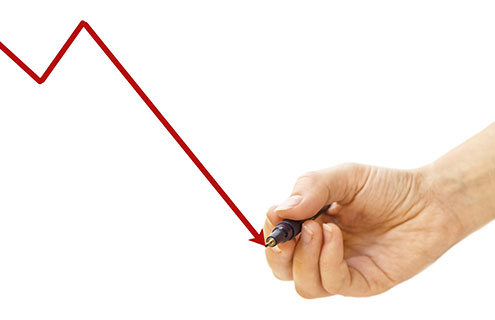Tesla shares declined by 6.9m since start of November
30 November 2019 New York
 Image: Shutterstock
Image: Shutterstock
The number of Tesla shares borrowed has declined by 6.9 million shares since the start of November, to a year-to-date low of 22.4 million.
The exchange short interest number pertaining the 15 November totalled 28.8 million shares, showing a decrease of 1.1 million shares during the first two weeks of the month.
According to IHS Markit’s short interest forecast model, the total short interest fell a further 1.5 million over the last two weeks of November to 27.9 million, the lowest level since March.
IHS Markit suggested that lenders are reporting 16 million shares as currently available to borrow, equating to $5.4 billion—both figures are a post-initial public offering high for the stock.
The total size of the lendable pool, including shares already lent out, has been consistently in the range of 30 to 31 million shares since the start of November, IHS Markit explained that recent securities lending availability increase is purely the result of existing borrows being returned.
The pricing for short exposure to Tesla credits has also declined.
IHS Markit revealed that after peaking above 500 basis points ahead of Q2 earnings in August, the cost to borrow the 5.3 percent 2025 bond has declined by more than 50 percent.
It noted that the further reduction in borrow fee since then has been driven by increasing supply from beneficial owners, who have added $85 million par value to lending programmes since the low point observed in mid-February.
IHS Markit said: “Taken together the reduction in equity demand combined with increased supply on the credit side has driven a reduction in the cost of placing bets against the future of the electric automaker across the capital structure.”
Given the Q3 earnings results, and the market reaction to them, IHS Markit explained that “it’s no surprise” that bears have reduced the position on the margin and that some investors have positioned themselves to benefit from further short covering and continued enthusiasm from the firm’s investor base.
IHS Markit noted that while the share price has bounced 39 percent off the year-to-date low, and is only 15 percent below the all-time-high observed in June last year, bears can at least enjoy a lower cost of admission to the short trade, for the time being.
It concluded: “With a current short balance of $9.9 billion the bearish sentiment is still significant and the lower carrying cost makes the position easier to manage for short sellers heading into 2019.”
The exchange short interest number pertaining the 15 November totalled 28.8 million shares, showing a decrease of 1.1 million shares during the first two weeks of the month.
According to IHS Markit’s short interest forecast model, the total short interest fell a further 1.5 million over the last two weeks of November to 27.9 million, the lowest level since March.
IHS Markit suggested that lenders are reporting 16 million shares as currently available to borrow, equating to $5.4 billion—both figures are a post-initial public offering high for the stock.
The total size of the lendable pool, including shares already lent out, has been consistently in the range of 30 to 31 million shares since the start of November, IHS Markit explained that recent securities lending availability increase is purely the result of existing borrows being returned.
The pricing for short exposure to Tesla credits has also declined.
IHS Markit revealed that after peaking above 500 basis points ahead of Q2 earnings in August, the cost to borrow the 5.3 percent 2025 bond has declined by more than 50 percent.
It noted that the further reduction in borrow fee since then has been driven by increasing supply from beneficial owners, who have added $85 million par value to lending programmes since the low point observed in mid-February.
IHS Markit said: “Taken together the reduction in equity demand combined with increased supply on the credit side has driven a reduction in the cost of placing bets against the future of the electric automaker across the capital structure.”
Given the Q3 earnings results, and the market reaction to them, IHS Markit explained that “it’s no surprise” that bears have reduced the position on the margin and that some investors have positioned themselves to benefit from further short covering and continued enthusiasm from the firm’s investor base.
IHS Markit noted that while the share price has bounced 39 percent off the year-to-date low, and is only 15 percent below the all-time-high observed in June last year, bears can at least enjoy a lower cost of admission to the short trade, for the time being.
It concluded: “With a current short balance of $9.9 billion the bearish sentiment is still significant and the lower carrying cost makes the position easier to manage for short sellers heading into 2019.”
NO FEE, NO RISK
100% ON RETURNS If you invest in only one securities finance news source this year, make sure it is your free subscription to Securities Finance Times
100% ON RETURNS If you invest in only one securities finance news source this year, make sure it is your free subscription to Securities Finance Times



